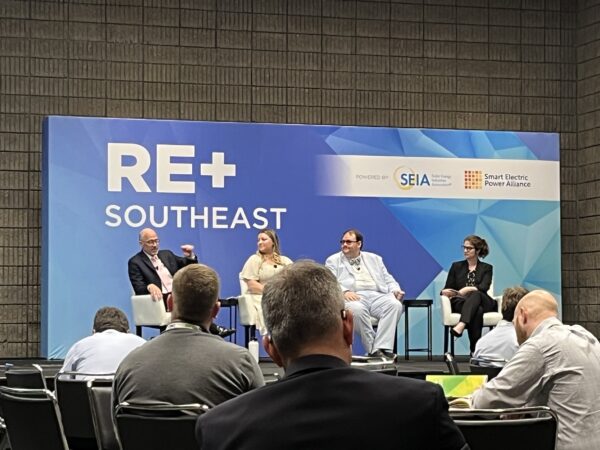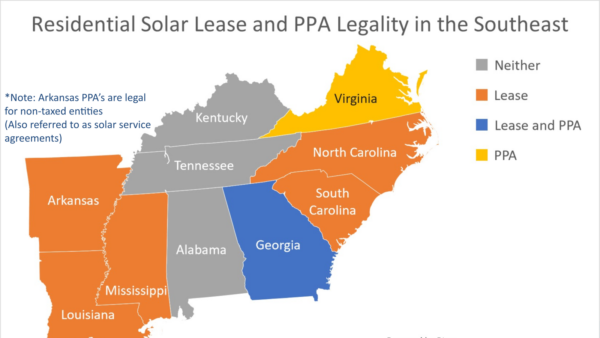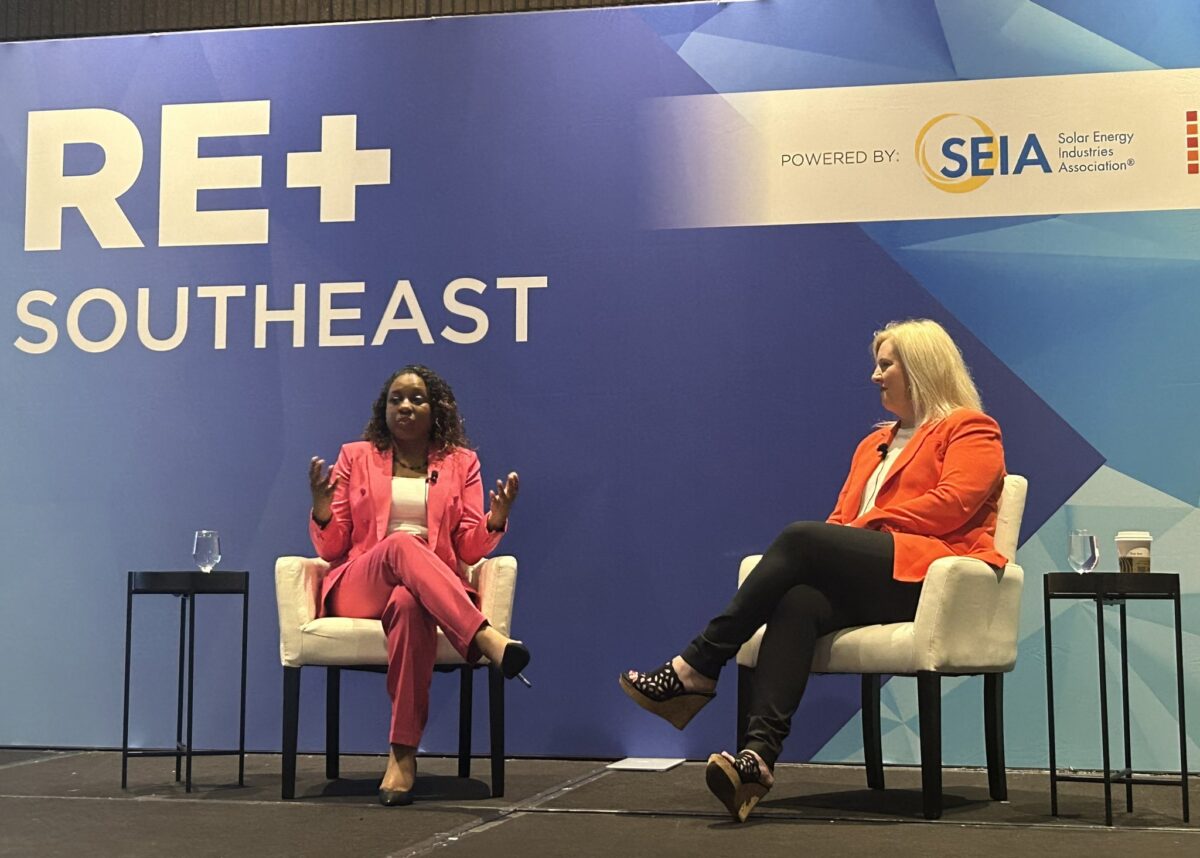RE+ Events, created by a collaboration between the Solar Energy Industries Association (SEIA) and the Smart Electric Power Alliance (SEPA), brings together regional and national leaders in renewable energy to collaborate and advance the market.
Buyers and suppliers in solar and energy storage convene to explore business solutions, new technologies, policy initiatives, and other market factors. Attendees walk away with new understanding of cutting-edge policy, trends, and know-how.
The week began with a pre-conference overview of the solar conference, dubbed Solar 101. Industry experts led a half day workshop designed for those who are interested in a crash course on the basics of the solar marketplace.
The conference continued with remarks from Chandra Farley, chief sustainability officer, City of Atlanta, and Abigail Ross Hopper, president and chief executive officer of SEIA.
Farley emphatically showed support for renewables in Atlanta, remarking, “We need 100% renewable energy for 100% of Atlantans.”
The conference ensued with many networking activities, exhibit hall product and service presentations, and insightful panel discussions, some of which are highlighted below.
Domestic content
One such discussion was focused on the incentives contained within the Inflation Reduction Act (IRA) and the guidance rolled out for domestic content requirements. Georgia is home to Sen. Jon Ossoff, who originated the Solar Energy Manufacturing for America (SEMA) bill, which was rolled into the IRA.
The state is also home to solar module manufacturer and panel participant Qcells, which announced an unprecedented $2.5 billion investment in a vertically integrated manufacturing site. Over 3.3 GW of solar ingots, wafers, cells, and finished modules will be produced at the site.
The discussion focused in part on the Internal Revenue Service guidance for the domestic content requirements to receive an additional 10% tax credit on solar projects. Proponents of a strong domestic supply chain argue that the new guidance fell short of expectations, failing to place high enough standards for what is considered domestic content, particularly by setting lax standards at the subcomponent wafer and cell levels in the supply chain.
Resilience
The resilience panel highlighted the damages of Winter Storm Eliot, which much like the Winter Storm Uri in Texas, caused great strain on the grid and led to multi-day widespread outages. The panelist remarked that over 6,000 MW of power was imported from the MISO region at a high cost, and about 30% of natural gas plants and 20% of coal plants failed under the extreme weather conditions.

Distributed solar-plus-storage and increased transmission infrastructure were suggested as improvements to the system to avoid long widespread blackouts in the future.
“Diversification, diversification, diversification,” suggested Simon Mahan, executive director, Southern Renewable Energy Association. Mahan said that diversifying electricity generation, transmission and especially local distribution, and geographic regions of development will boost the Southeast’s energy resilience.
Utility Southern Company senior vice president of government affairs, Noel Black suggested transmission as the key to resilience, calling for a “spider web on a spider web” of wiring. To Black, resilience means to “get through it and get back to it.”
He said that increased transmission infrastructure would be a boon to solar developers, as it would create more points of interconnection and lower costs by bringing those connection points closer to project sites.
Carolyn Dougherty, analyst and industry strategy, SEPA suggested starting with a microgrid-based approach to boosting resilience. By equipping key assets like water treatment plants, emergency shelters, and hospitals with solar and energy storage microgrids, the most important resources can stay online during tail events like Winter Storm Eliot. Plus, these assets can operate effectively as power supply during “blue sky” conditions, she said.
“For some, losing power is a minor inconvenience, for others, like those supported by medical devices, it can mean life or death,” said Dougherty.
Third-party ownership
Another panel discussed third-party ownership (TPO) for residential and commercial solar projects in the Southeast. The region has typically lagged the rest of the nation in both power purchase agreements and leases for small-scale solar projects.

This is due in part to laws across the Southeast that prevent such contracts. The leading solar state in the Southeast, Georgia, is the only state that allows for both solar leases and power purchase agreements. Kentucky, Tennessee, and Alabama allow neither, something that the panel members suggested should change to rooftop solar adoption.
The panel remarked on how new incentives within the Inflation Reduction Act could open the door for a more robust TPO market in the Southeast.
Further panel discussions touched on hot topics like sustainable decommissioning tactics, preparing a diverse and inclusive workforce, and enabling electric mobility in the region.
This content is protected by copyright and may not be reused. If you want to cooperate with us and would like to reuse some of our content, please contact: editors@pv-magazine.com.









By submitting this form you agree to pv magazine using your data for the purposes of publishing your comment.
Your personal data will only be disclosed or otherwise transmitted to third parties for the purposes of spam filtering or if this is necessary for technical maintenance of the website. Any other transfer to third parties will not take place unless this is justified on the basis of applicable data protection regulations or if pv magazine is legally obliged to do so.
You may revoke this consent at any time with effect for the future, in which case your personal data will be deleted immediately. Otherwise, your data will be deleted if pv magazine has processed your request or the purpose of data storage is fulfilled.
Further information on data privacy can be found in our Data Protection Policy.